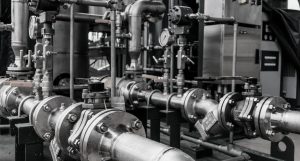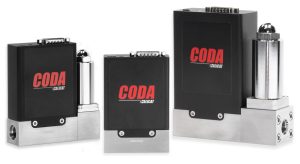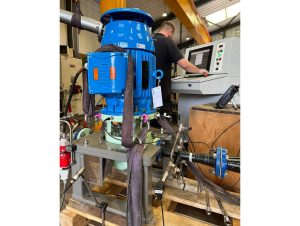The flow setting varies during the process, initially, you need a bit of a higher flow to thoroughly replace the ambient air. Later in the process the flow needs to be minimalized and constant.
The type of gas or gas mixture is dependent on process, but is mostly argon or based, as a mixture, around argon. More about that later.
Application of protective gases
Shielding gases are essential in many welding processes. Take for instance welding process pipes together. This is often done with MIG/TIG orbital welding and requires a very high-quality weld. Good weld seams can be smooth and do not require to be reworked, which makes them ideal for applications in the pharmaceutical and food industries. Precise flow control of these gasses during welding ensures a constant and stable flow of gas, which significantly improves the quality of the welds.
Gasses used
As mentioned, the selection of the right gas and gas mixture is critical for a good result, gasses used and their effect are:
Argon is the most common shielding gas, widely used as the base for the more specialized gas mixes. Most of the time the argon serves as a base where a few % of the gases mentioned below are added.
Carbon dioxide is the least expensive shielding gas, providing deep penetration, however, it negatively affects the stability of the arc and enhances the molten metal’s tendency to create droplets (spatter). Carbon dioxide in a concentration of 1-2% is commonly used in the mix with argon to reduce the surface tension of the molten metal.
Helium is lighter than air; larger flow rates are required. It is an inert gas, not reacting with the molten metals. Its thermal conductivity is high. It is not easy to ionize, requiring a higher voltage to start the arc. Due to higher ionization potential it produces a hotter arc at higher voltage, and provides wide deep beads; this is an advantage for aluminium, magnesium, and copper alloys.
Oxygen is used in small amounts as an addition to other gases; typically as 2–5% addition to argon. It enhances arc stability and reduces the surface tension of the molten metal, increasing wetting of the solid metal.
Hydrogen is used for welding of nickel and some stainless steels, especially thicker pieces. It improves the molten metal fluidity and enhances cleanness of the surface. It is added to argon in amounts typically under 10%. It can be added to argon-carbon dioxide blends to counteract the oxidizing effects of carbon dioxide.
Nitric oxide addition serves to reduce production of ozone. It can also stabilize the arc when welding aluminium and high-alloyed stainless steel.
Sulfur hexafluoride can be added to shield gas for aluminium welding to bind hydrogen in the weld area to reduce weld porosity.
Dichlorodifluoromethane with argon can be used for protective atmosphere for melting of aluminium-lithium alloys. It reduces the content of hydrogen in the aluminium weld, preventing the associated porosity.
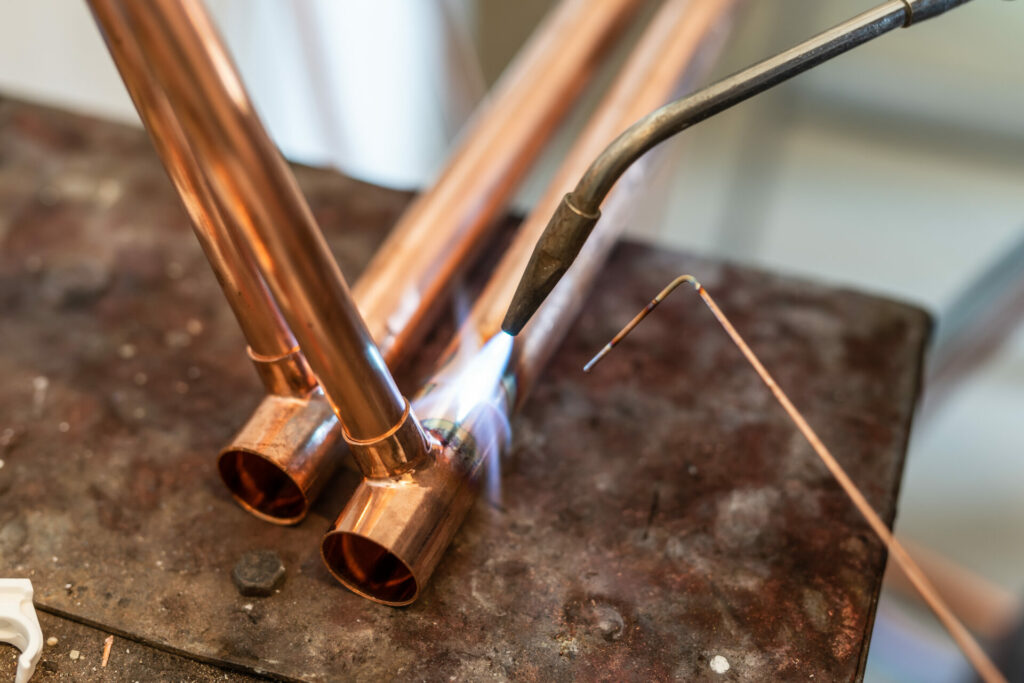
Solutions through the use of mass flow controllers
Vögtlin’s thermal mass flow controllers for gasses make a significant contribution to optimizing the welding parameters in different ways and can save money.
Most people purchase premixed gas from a gas company and you can use one mass flow controller to maintain a repeatable and constant minimum required flow that makes your bottle last a lot longer so you can save costs on these expensive mixtures.
More and more people however choose to create and fine-tune their own mixture. They buy the above-mentioned gases separately and buy a mass flow controller for each gas. If you want to create a shield gas mix you can set the setpoint of each required gas and adjust and optimize your mixture.
Except for the flexibility and adaptability, you save a lot of money on the costs of buying expensive pre-mixed shielding gasses.
Flow meters can support mechanized or robot-assisted welding processes They enable precise regulation of the gas quantity, which improves the quality of the weld seams and optimizes gas consumption. They also contribute to the formation and maintenance of a perfect welding arc and prevent operating and welding errors Vögtlin flow and pressure regulators can be used to store flow and pressure data from the devices for quality control purposes.
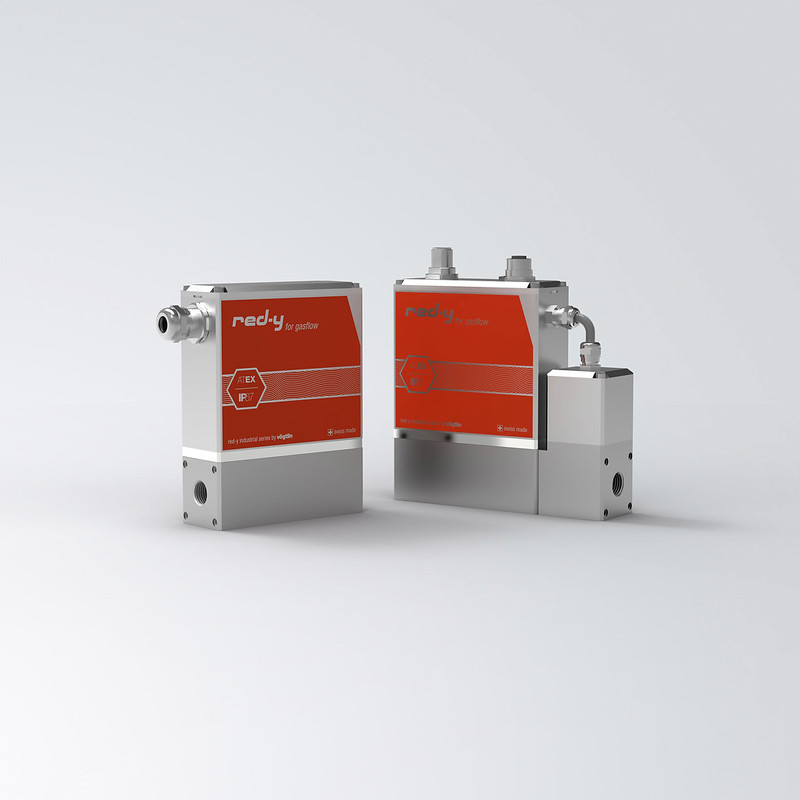
Conclusion
Especially when there is a high demand for gas mixtures, it is often worth using a gas mixer. Only pure gases are purchased and the ideal mixture for the process is produced on site. The advantages are significantly lower gas costs and a high degree of flexibility in the composition of the shielding gas mixture depending on the application.
The Vögtlin MEMS Mass flow controllers are exceptionally well suited for this application. The MEMS technology guarantees long-term stability without deviations under the condition of a clean and dry gas supply. Thanks to this long-term stability, the same repeatable result is achieved time and time again. This reduces the need for annual recalibration.
High-precision Thermal Mass Flow Meters & Mass Flow Controllers for Gases
Reliable technology and industry-standard interfaces make the red-y smart and the red-y industrial series, thermal mass flow meters (MFM) and mass flow controllers (MFC), particularly suitable for measurement and control in gas delivery systems and plant engineering applications.
red-y smart series PDF Datasheet
red-y industrial series PDF Datasheet
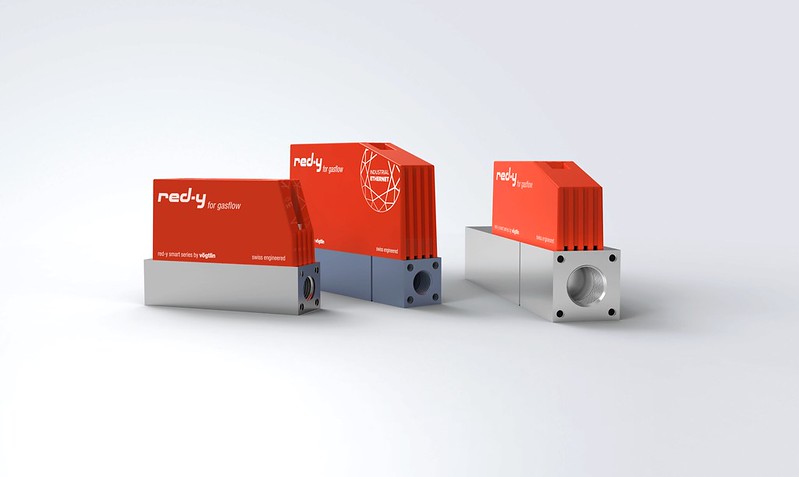
Source of Article

